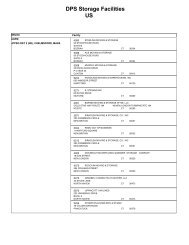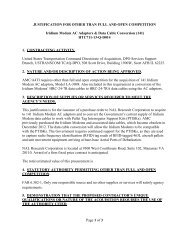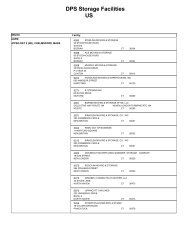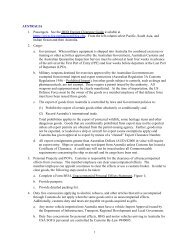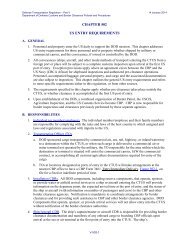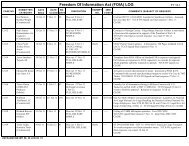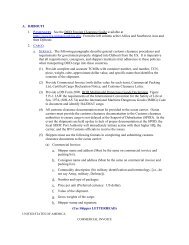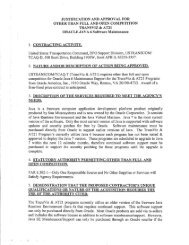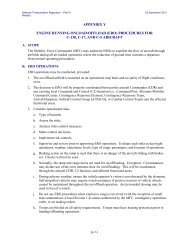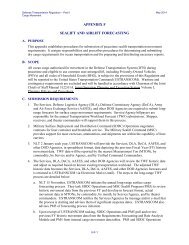HistoryFull.pub - United States Transportation Command
HistoryFull.pub - United States Transportation Command
HistoryFull.pub - United States Transportation Command
Create successful ePaper yourself
Turn your PDF publications into a flip-book with our unique Google optimized e-Paper software.
ARFCOSTA Subic Bay moved to permanent quarters in Building 8160, adjacent to the Cubi PointAir Terminal. This was convenient for several reasons. Many courier shipments was made usingcouriers “designated” from passenger manifests prepared by the air terminal operations office, so thestation was strategically located to access this source of manpower. The site also placed the stationcloser to the flight line and to ships/customers in the bay. This facilitated both use of carrieronboard-delivery(COD) flights to service ships at sea and designation of a COD’s pilot or co-pilot asthe mission courier.ARFCOSTA Subic Bay was a small cinder-block building consisting of a “strengthened” vault andan administrative area. A loading dock facilitated loading/unloading of vehicles and access to thematerial entering/leaving the station. The site was at the bottom of a rather large, grass-covered hill(see picture on previous page). The service road was above the station, which meant the couriers hadto park their personal vehicles off the road and use stairs to access the building. Due to the station’sproximity to the flight line, only “authorized” vehicles were permitted access to the station loadingdock.The morning of 2 September began like any other, except for the rain, of course. The members of thestation jockeyed for position around the coffee pot, grumbled about the rain, and smiled if they didn’thave to go out in it. LtJG Joseph C. Conrad, Officer-in-Charge of the station, was inside working onstation issues. Machinist Mate First Class Donald E. Stickney, a native of Columbus, Nebraska, wasalso inside the station and might have been thinking of how that rain could benefit the wheat fields ofhis community. Other station members were engaged in normal station activities.About mid-morning, 0940 hours local time - 9:40 A.M. for civilians – a low rumbling sound washeard. The sound grew to a roar and, within seconds, a sea of mud smashed into the station, demolishingmost of the administrative area, collapsing the loading dock and roof, and enveloping Conradand Stickney. Five additional station members were tossed about as the building collapsed and theirworld turned topsy-turvy. Fortunately, the strengthened walls of the vault withstood most of theshock and were not smashed, thus preventing the collapse of the entire building and probably savingthe lives of several of those who were merely injured.The record rainfall had loosened the soil of the hillside to the point where it collapsed, allowing a virtual“sea” of mud to cascade down the rather steep hillside. The mudslide responded to the pull ofThe collapsed roof and loading dock attest tothe force of the mudslide which smashed intothe station that morning. Here, an army ofmilitary and civilian personnel try to locateand recover the casualties.Station vehicles after the landslide. The truckhad been parked on the road above the station;the van had been parked at the loading dock.Note the large area of the hill which loosenedinto the landslidePAGE ~ 52



